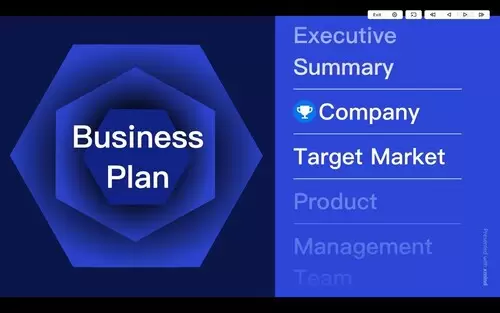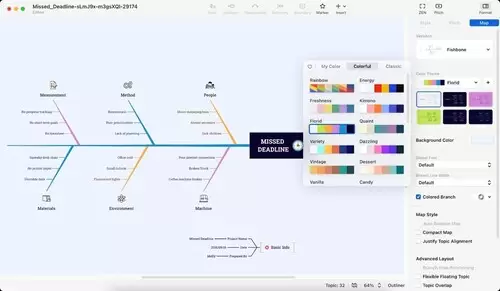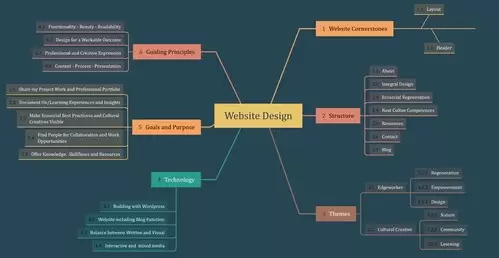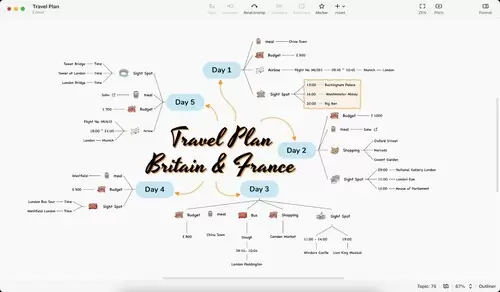In today’s fast-paced world, being able to manage information effectively is key to achieving success. Mind mapping is a popular technique used to visualize and organize idea. This is because it involves creating diagrams that represent ideas, tasks, or other pieces of information. It is a useful tool for improving creativity, memory retention, and problem-solving.
Mind mapping improves creativity by encouraging users to think outside the box and make new connections between ideas. It can also improve memory retention by engaging more parts of the brain and creating stronger neural connections. Here are a few benefits of mind mapping:
- Helps to organize thoughts and ideas in a visual and logical manner
- Enhances creativity and brainstorming by encouraging the generation of new ideas and connections
- Improves memory retention and recall by using visual and spatial cues to help remember information
- Facilitates better decision-making by mapping out all relevant information and considering different options
- Increases productivity by breaking down complex tasks or projects into smaller, manageable steps
- Helps to identify areas of improvement and potential solutions to problems by identifying patterns and relationships between ideas and information
- Encourages collaboration and communication by allowing multiple people to contribute to and view the same mind map.
Top 5 Mind Mapping Tools
There are a number of efficient tools available that can make mind mapping easier and more effective. Whether you are a student, a creative professional, or just someone looking to boost your productivity, there is a mind-mapping tool out there that can help you achieve your goals. Let’s explore five of the top mind-mapping tools available today.
Xmind
Xmind is a popular and versatile mind-mapping tool that offers a range of features for personal and professional use. It has an intuitive interface that makes it easy to create and edit mind maps, and it offers a variety of templates and themes to choose from. Also, Xmind is available for download on multiple platforms, including Windows, macOS, Linux, iOS, and Android. On top of it, its web version allows users to create maps in their web browser. Here are some of the highlighting features of Xmind:
The Pitch Mode (Presentation mode)
This feature enables users to easily convert their mind maps into professional-looking presentations. With Xmind’s Pitch Mode, you can showcase your ideas to your colleagues, clients, or audience in a visually appealing and organized way. For instance, if you’re presenting a new project proposal to your team, you can use Xmind to create a mind map. It outlines the main objectives, tasks, timelines, and resources needed. Moreover, you can then switch to Pitch Mode to transform the mind map into a slideshow that includes animations, transitions, and speaker notes. This way, you can communicate your ideas more effectively and engage your audience.
Smart Color Theme
Xmind’s Smart Color Theme feature automatically adjusts the color of each element in your mind map based on your preferences and the type of content. This means that you don’t have to spend time manually coloring each topic or subtopic. Also, you can ensure that your mind maps are consistent and easy to read. For example, if you’re creating a marketing plan for a new product launch, you can use Xmind’s Smart Color Theme. You need it to assign different colors to the market research section, the advertising section, the social media section, and so on. This way, you can quickly visualize the different components of your plan and spot any gaps or overlaps.
Mixed Structures
Xmind’s Mixed Structures feature allows users to combine different map structures such as mind maps, fishbone diagrams, tree tables, and org charts within the same mind map. This means that you can create complex and multidimensional diagrams that show the relationships between different concepts or entities. For instance, if you’re brainstorming ideas for a new website design, you can use Xmind. This is to create a mind map that includes the different pages, features, user flows, and user personas. You can then switch to the Fishbone Diagram structure to identify the main factors that affect the user experience, such as usability, aesthetics, functionality, and accessibility. You can also use the Tree Table structure to compare different design options based on their pros and cons.
Comprehensive Thinking Tools
Xmind’s Comprehensive Thinking Tools feature provides a range of tools to help users better organize their thoughts and add more information to their mind maps. These tools include adding relationships, summaries, boundaries, annotations, notes, and images. For example, if you’re planning a trip to a new city, you can use Xmind to create a mind map that includes the different attractions, restaurants, hotels, and transport options. You can then use the Annotations tool to add comments or ratings to each location, the Images tool to insert photos or logos, and the Summaries tool to group similar locations or activities. Thus, you can create a personalized and detailed itinerary that meets your needs and preferences.
Mind Mapping Tools: MindMeister
MindMeister is another popular mind-mapping tool that offers a range of features for creating and sharing mind maps. It has an easy-to-use interface that makes it simple to create and edit mind maps, and it offers a variety of collaboration tools for team projects. Also, MindMeister also integrates with other productivity tools, such as Google Drive and Trello.
iMindMap
iMindMap is a versatile mind-mapping tool that offers a range of features for personal and professional use. It has an intuitive interface that makes it easy to create and edit mind maps, and it offers a variety of templates and themes to choose from. One of the most impressive features of iMindMap is its 3D view. This allows users to view their mind maps in a unique and engaging way.
Coggle
Coggle is a simple yet powerful mind-mapping tool that offers a range of features for creating and sharing mind maps. It has an easy-to-use interface that makes it simple to create and edit mind maps, and it offers a variety of collaboration tools for team projects. Coggle also offers a mobile app for convenient on-the-go use.
MindNode
MindNode is a sleek and simple mind-mapping tool that offers a range of features for personal and professional use. It has an intuitive interface that makes it easy to create and edit mind maps, and it offers a variety of templates and themes to choose from. Also, MindNode integrates with other productivity tools, such as Evernote and Things.
Conclusion on Mind Mapping Tools
So when it comes to organizing your ideas, tasks, and projects, mind-mapping tools can be a game-changer. These tools can provide invaluable assistance. Whether you’re a student juggling multiple assignments, a busy professional trying to stay on top of tasks, or simply looking to streamline your thought process. Among the many options available, Xmind stands out. It stands out for its advanced customization options, extensive library of templates, and robust collaboration tools. However, there are other tools worth considering, including MindMeister, iMindMap, Coggle, and MindNode, each with its unique features and benefits. By exploring these options, you can find the perfect tool to enhance your productivity, streamline your workflow, and bring your ideas to life.

Petr is a serial tech entrepreneur and the CEO of Apro Software, a machine learning company. Whenever he’s not blogging about technology for itechgyan.com or softwarebattle.com, Petr enjoys playing sports and going to the movies. He’s also deeply interested in mediation, Buddhism and biohacking.




